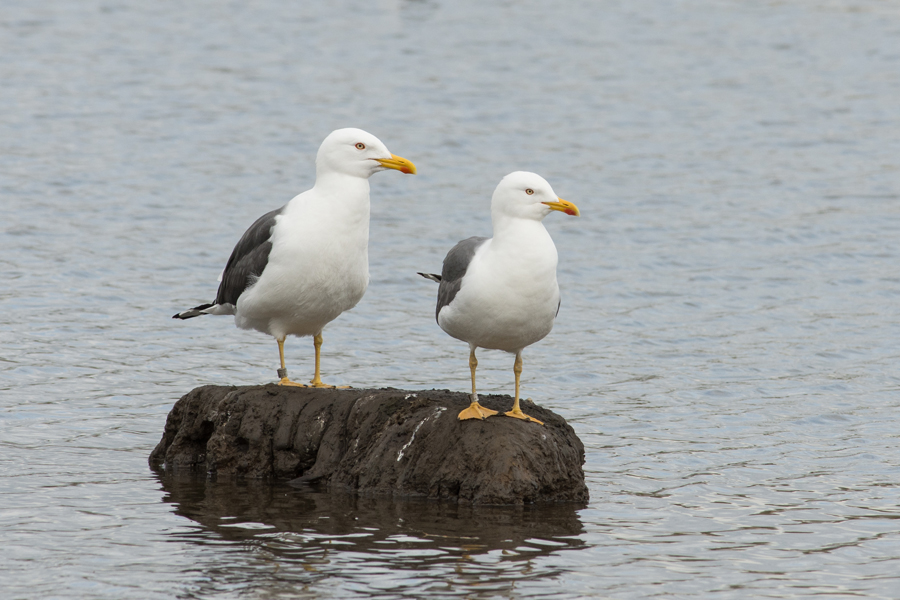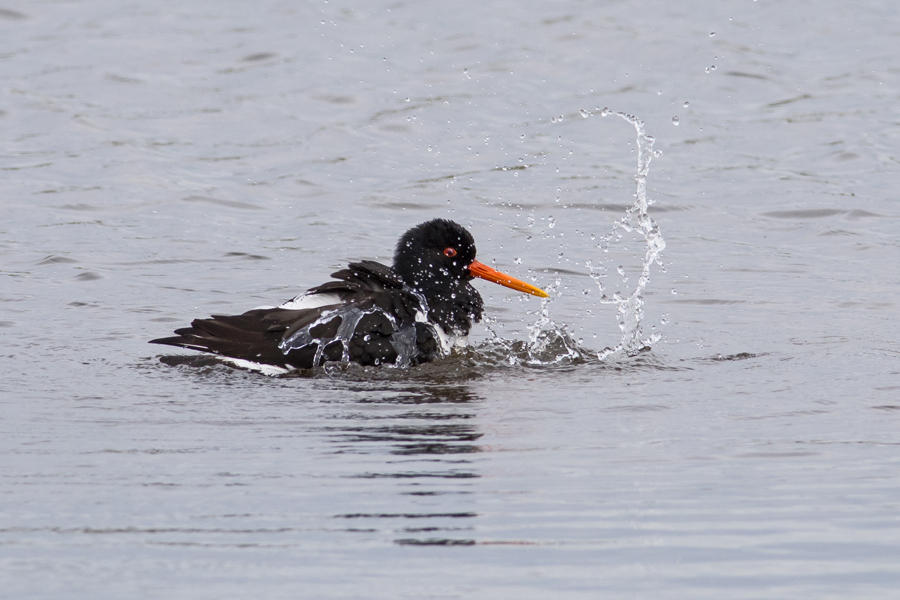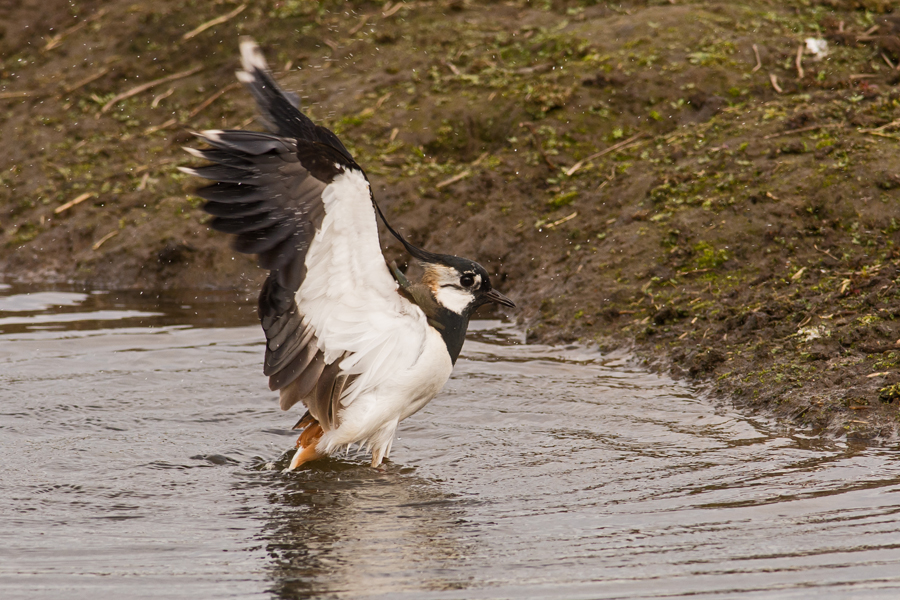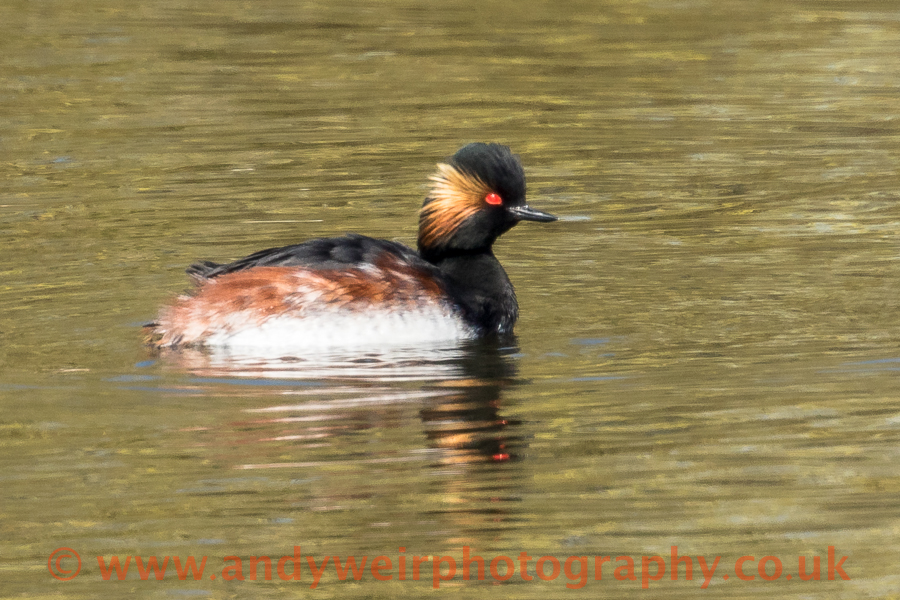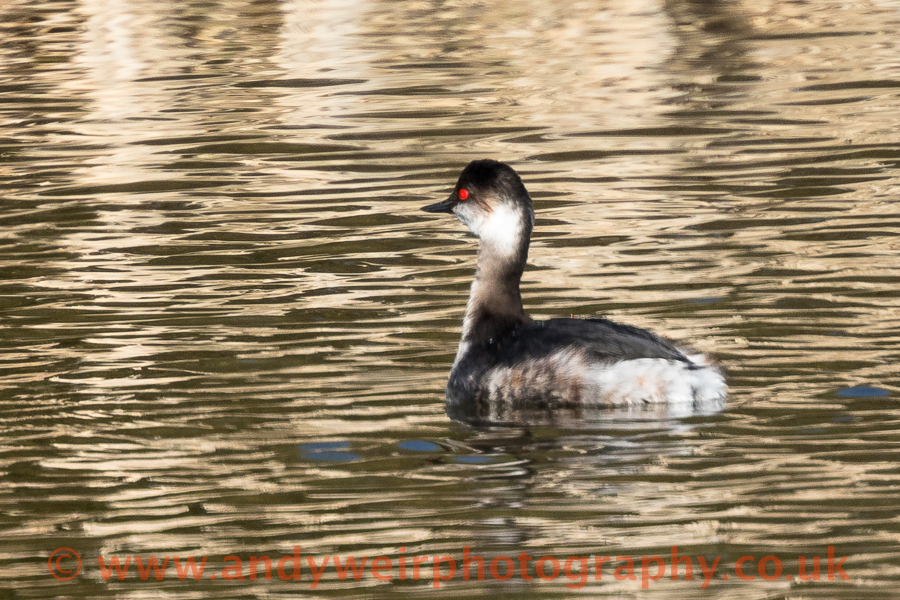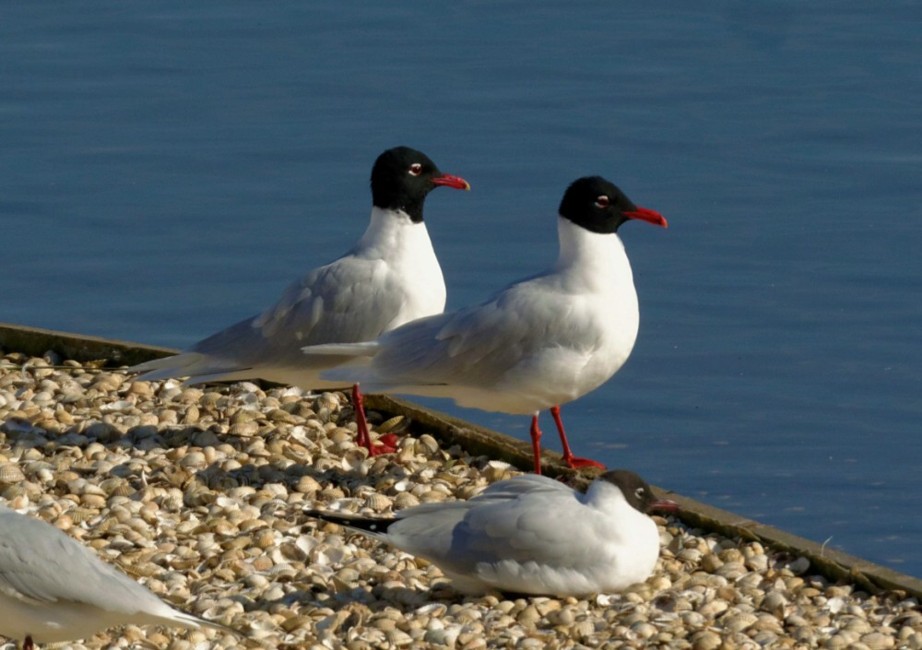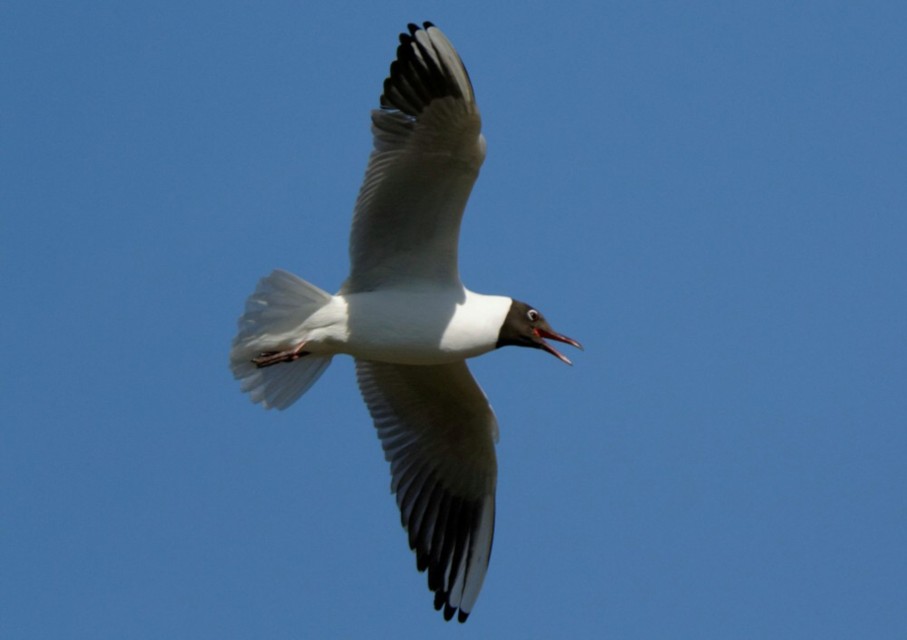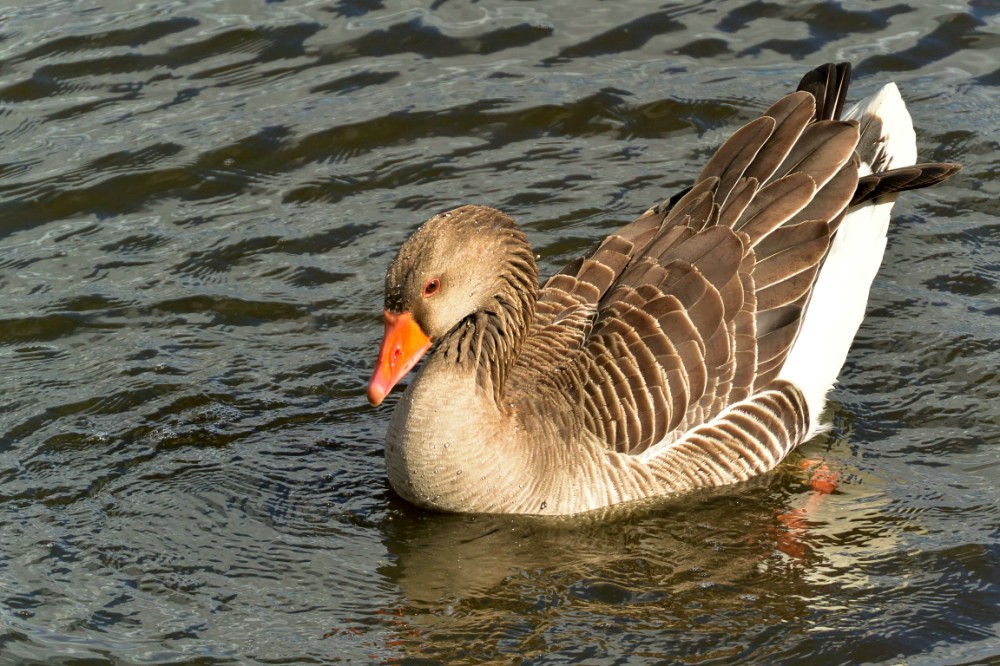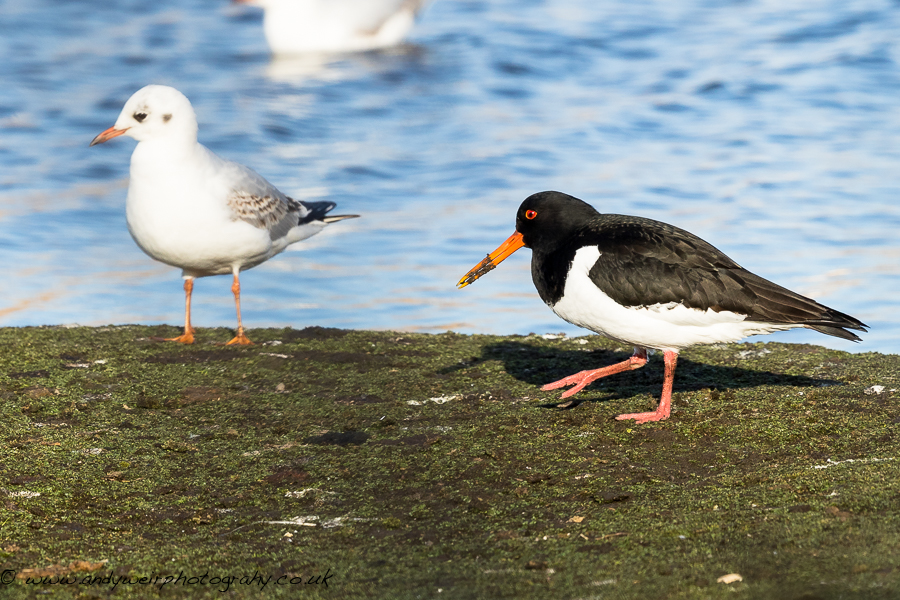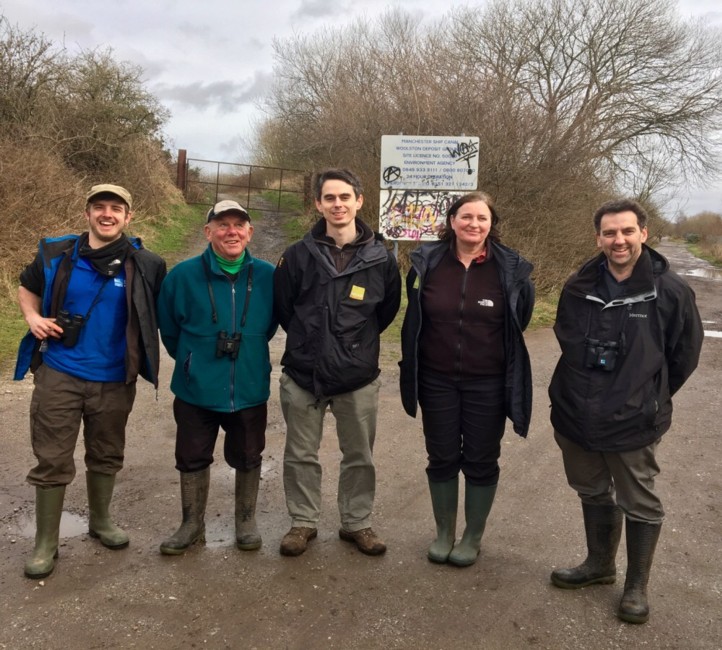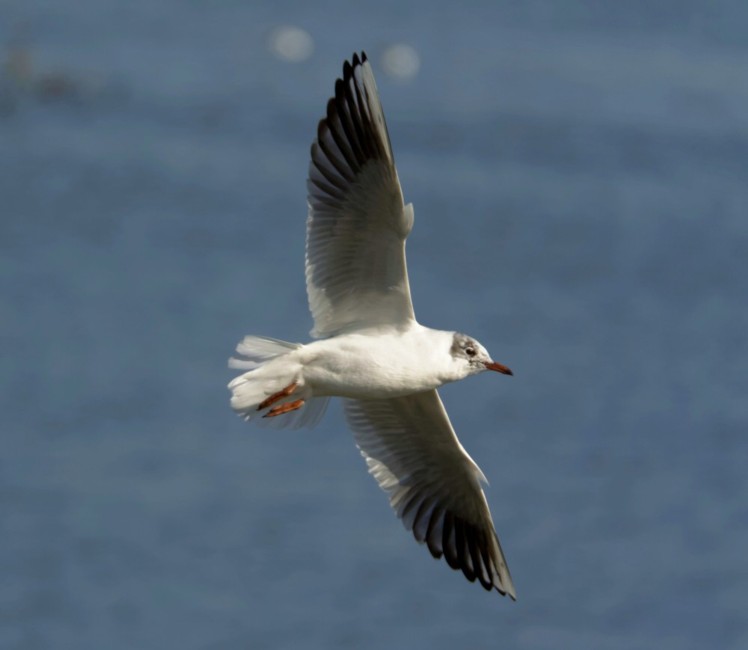Woolston Eyes Monthly Sightings
2017-03-30
Lots of birds in song today in spite of some rain early on. A total of 119 singing male Chiffchaffs across the reserve is a record count for Woolston and is certainly an under estimate as I did not cover parts of Nos. 1 and 3 beds. Other counts included 96 Robins, 26 Wrens, 17 Dunnocks and 7 Song Thrushes. A Kingfisher was on the canal near the car park and on the Loop of No.4 bed a Canada and a Greylag Goose have paired up! It will be interesting to see what if anything results from this relationship.
Submitted by: Dave Hackett
2017-03-31
Yesterday morning at the highlights on No.3 bed were: 2 Mediterranean Gulls (an adult and a 2nd summer), 9 Black-necked Grebes and a passage of just over 100 Sand Martins. Cheers David Bowman (with Alan Warford and David Spencer)
Submitted by: David Bowman
2017-03-30
Lesser Black Backed gulls, Taken from John morgan hide,
3 Black necked Grebes far off from Rotary Hide . one Pair and one still in winter plumage
Submitted by: Keith Gallie
2017-03-27
Distant Black-necked Grebe (podiceps nigricollis) from The rotary Hide
Submitted by: Andy Weir
2017-03-27
Distant Black-necked Grebe (podiceps nigricollis) from The rotary Hide
Submitted by: Andy Weir
2017-03-27
Distant Black-necked Grebe (podiceps nigricollis) from The rotary Hide
Submitted by: Andy Weir
2017-03-27
A really relaxed afternoon on No.3 bed, with warm sunshine and blue skies. Despite the favourable winds the only signs of migration were a Redshank, which flew through calling and three Sand Martins which passed over so high they were at the edge of binocular vision. Earlier, Dave Riley reported two Little Ringed Plovers moving over No.1 bed. Otherwise, 7 Black-necked Grebes, 8 Great Crested Grebes, 16 Little Grebes, 700 Black-headed Gulls, 14 Pochard, 65 Teal, 48 Shoveler and 61 Tufted Ducks were the pick of the crop. The photos, as per usual, are of the comings and goings of the common birds in front of the Morgan Hide.
Photo of Canada Geese dropping into No.3 bed today.
Cheers David Bowman
Submitted by: David Bowman
2017-03-25
After a frosty start on No.3 bed the morning mellowed into brilliant spring sunshine. We started and finished by searching for migrants from the Morgan Hide but, in between, David Spencer and I completed our first Common Bird Survey (CBC) of the year for the bed. Birds of the day were undoubtedly the pristine pair of adult Mediterranean Gulls which visited the Morgan Hide scrape on several occasions. Seven Black-necked Grebes were still looking settled among the masses of gulls and an early Willow Warbler and two Blackcaps were in song from the North Meadow and a Cetti’s Warbler from the East Bank. Highest counts from the CBC were of 20 Chiffchaffs, 35 Robins and 22 Wrens, all in full song.
The photo shows the Med. Gulls.
Cheers David Bowman (with Alan Warford, David Spencer,Sue Haddock, Helen Wynn, Diane Shepherd, George Dunbar,Gem Crombleholme, Brian Baird, Les Jones and Helen’s friend Sharon!)
Submitted by: David Bowman
2017-03-24
Highlight of this morning was a Red Kite, seen by Dave Riley, passing over No.1 bed. Once a real rarity on the Reserve, they are now an annual visitor, with one or two in most years. Elsewhere, on No.3 bed, the 7 Black-necked Grebes were looking settled among the 750 Black-headed Gulls at the colony. Despite much searching, the only other gulls found were Common, Herring and Lesser Black-backed. Other sightings of interest included reports of Brimstone, Comma and Small Tortoiseshell butterflies (courtesy of Dave Hackett and one of our Permit Holders).
Photo of a Black-headed Gull
Cheers David Bowman
Submitted by: David Bowman
2017-03-23
To start the day Ash Radford and I carried out our first common bird survey of the year on the northern half of No.4 bed. We had good counts of Chiffchaff (23), Robin(41), Wren(21), Chaffinch(11) and Bullfinch(9) amongst others. Chiffchaffs were in song across the Reserve throughout the morning and I counted 59. By early afternoon however, song was much less in evidence so I presume this total is an underestimate of birds present. Chiffchaff numbers normally peak during the first week in April so today’s totals are encouraging. Three pairs of Buzzard were displaying and a pair of Mute Swans were building a nest to the north of No.2 bed. The sunny but cool conditions resulted in my first butterfly sightings of the year, a Brimstone on Butchersfield Tip and a Peacock along the river. A small colony of Wood Anemones was in flower at the entrance to the south meadow on no.3 bed.
Submitted by: Dave Hackett
2017-03-23
A Barn Owl was hunting the meadow outside the Morgan Hide at 4.30 pm yesterday.
Cheers David
Submitted by: David Bowman
2017-03-21
A mid-morning to near-dusk visit to No.3 bed, in sunny but blustery conditions, produced a nice trickle of migrants. A single Blackcap was singing on the south bank, with 11 Chiffchaffs spread around the bed. Sand Martins were beating their way north in ones and twos, totalling 18 by the end of the day. Woolston is always special for grebes and the bed held an impressive 6 Black-necked, 7 Great Crested and 15 Little Grebes. Other good sightings included: 1 Cetti’s Warbler, 1 Peregrine, 6 Buzzards, 2 Kestrels, 1 Sparrowhawk, 2 Willow Tits, 3 Ravens, 1 Water Rail, 2 Oystercatchers, 63 Teal, 52 Shoveler, 9 Stock Doves and, unusually, 1 Rook.
Photo of a Greylag Goose (yawn!)
Cheers David
Submitted by: David Bowman
2017-03-14
WeBS Count for 12th March
Little Grebe 10, Great crested Grebe 12, Cormorant 4, Mute Swan 18, Grey Heron 3, Canada Goose 19, Greylag Goose 10, Shelduck 21, Gadwall 53, Teal 192, Mallard 45, Shoveler 40, Pochard 44, Tufted Duck 226, Moorhen 28, Coot 31, Black headed Gull 610, Lesser Black backed Gull 2, Oystercatcher 2, Lapwing 2
Brian Martin, David Spencer,Derek Britch and Ash Radford
Submitted by: Brian Martin
2017-03-13
The first spring migrants were seen on Saturday (11th) with one Sand Martin flying through and several Chiffchaffs singing. 3 Black-necked Grebes were seen today, with a one in winter plumage and 2 summer plumage birds. c6 Sand Martins also passed through today.
Submitted by: David Spencer
2017-03-08
A really productive eleven hours today. Starting with a bit of dawn birding, followed by a meeting with our colleagues from Natural England and the RSPB to carry forward our planning for the proposed new wetland on No.4 bed. We’ve already managed to raise £150,000 towards this from a combination of Carbon Landscape (HLF) funding and a Countryside Stewardship grant. Then, we met up with Andy Harmer,his son Sam and Jeff Clarke to get some drone footage of Nos.3 and 4 beds, to use to help us plan future management work. In the summer, Andy will come back to help us get drone footage of our Black-headed Gull colony, as this is the most accurate way of assessing the number of occupied nest sites. Then it was more chilled birding, with the Reserve to myself, till sunset. Birding highlights of the day were: 1 Marsh Harrier, 1 Barn Owl (seen by Ashley Radford), 1 Curlew, 1 singing Cetti’s Warbler, 3 Water Rails, 900 Black-headed Gulls, 6 Little Grebes, 45 Teal, 3 Sparrowhawks, 1 Kestrel, 5 Buzzards, 6 Grey Herons, 4 Great Crested Grebes, 34 Shoveler and 2 Willow Tits.
Photo of Brian Ankers (WECG Chair, Amanda Wright and Ben (from Natural England)and Robin Horner and Ash Radford (RSPB)
Cheers David
Submitted by: David Bowman
2017-03-04
You know that spring has arrived at Woolston Eyes when you can hear the raucous squabbling of Black-headed Gulls as soon as you step onto the No.3 bed footbridge. Today, numbers steadily incremented till c.1,300 were present by mid-afternoon. We started the day by welcoming Jane Cullen and her colleagues from the Cheshire and Wirral Badger Group, who were all keen to enjoy a morning’s birding. Breakfast in the Morgan Hide was followed by a wander across No.1 bed and as far as Bollin Point. Highlights were: a Mediterranean Gull (picked up by Kieran Foster and George Dunbar), a smart male Stonechat, a calling Green Woodpecker, 2 Woodcocks, 7 Goldcrests, 33 Fieldfares, a female Peregrine standing guard at the Viaduct breeding site, 7 Buzzards, 1 Kestrel, 55 Shovelers, 1 Willow Tit, 8 Bullfinches, 5 Great Crested Grebes and 1 Siskin. We finished (some of us, anyway!) with a lazy lunch in the Morgan Hide, watching the restless activity of the gulls.
Photo of a Black-headed Gull from this morning.
Cheers David Bowman (with Dave Steel, Alan Warford, Helen Wynn, Diane Shepherd, George Dunbar, Brian Baird, Sue Haddock, Les Jones, Jane Cullen et al)
Submitted by: David Bowman
2017-03-01
The first day of spring meteorologically speaking and a pleasant and for once dry day! Nothing out of the ordinary but plenty of birdsong; Counts of singing males included 75 Robins, 12 Dunnock and 9 Song Thrush. A Peregrine was on the viaduct, the first time I have seen one there for some time so hopefully they will breed again this year. Wildfowl counts included 299 Tufted Duck, 59 Gadwall, 62 Shoveler and 38 Coot. A total of 9 Great-crested Grebes included pairs on No.3 bed the river and the canal.
Submitted by: Dave Hackett

